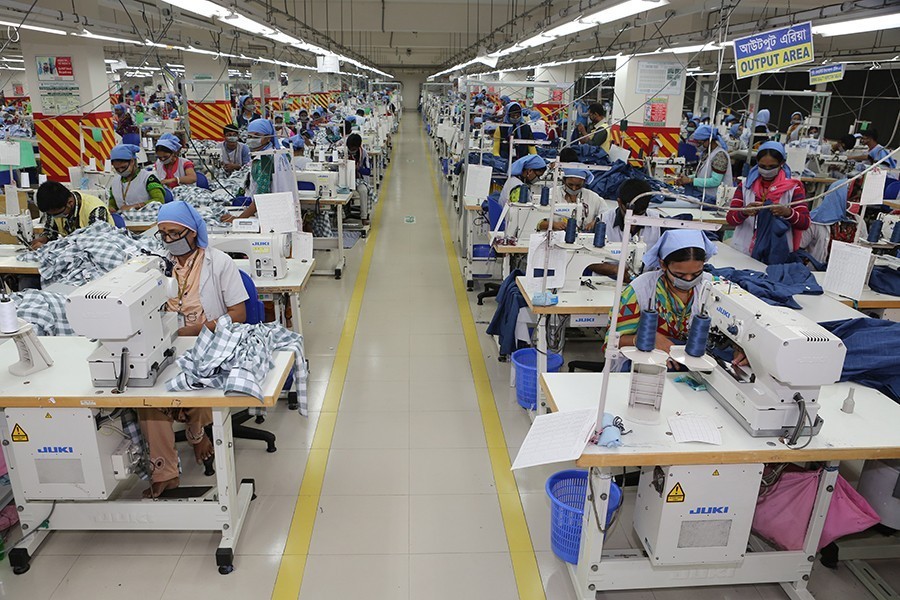Garment workers income during the first three months of 2022 increased mainly due to excessive workloads and overtime, according to a latest survey findings.
The additional income, however, failed to give them relief or go back to pre-Covid situation as cost of living has increased manifold, it found.
Garment workers cost for living or house rent went up by 17 per cent over a period of two years from 2020 while their expenditure for rice --mostly consumed item – its price increased by 12 per cent, according to the findings.
The findings of the survey titled ‘The Lives of Garment Workers during COVID-19’, carried out jointly by South Asian Network on Economic Modeling (SANEM) and Microfinance Opportunities (MFO), were presented at a webinar held on Thursday.
Lawfully, a worker's regular working time is eight hours and he/she can do additional two hours as overtime.
"But they were engaged in working more hours because they enjoyed it, things are not like that. They did more overtime as they can earn additional money by doing so," Farah Marzan, project field manager, Garment Worker Diaries, said while presenting the findings.
Before pandemic, an operator got work supports by three helpers working under he/she while at present they don't get such support thus increasing their workloads, she explained.
Dr Bazlul Haque Khondker, chairman of SANEM explained that a worker had to work more than 10 hours a day that resulted in income rise.
Despite some increase in income, they could not go back pre-Covid situation as their house rent now reached TK 3,500 from Tk 3,000.
Rice price also increased from Tk 40 per kg to Tk 54 since January 2017 to January 2022, he explained.
He, however, suggested keeping the workloads at a tolerable level for sustainability.
SANEM and MFO have been jointly conducting a series of surveys since March 2020 to better understand how the lives of garment workers in Bangladesh have evolved during the COVID-19 crisis.
These surveys are being conducted under the project titled “Garment Worker Diaries”.
A selected pool of 1,300 garment workers from Dhaka City, Savar, Gazipur, Narayanganj and Chittagong were surveyed every week.


